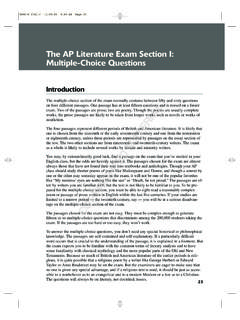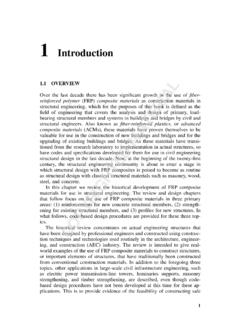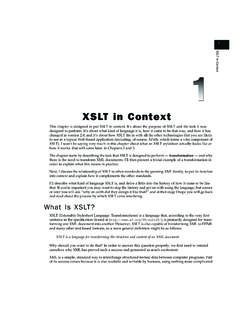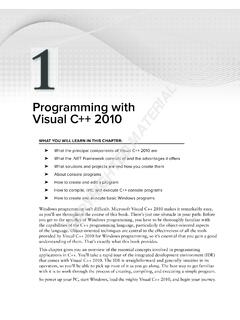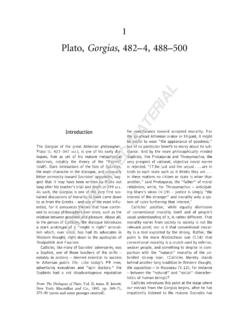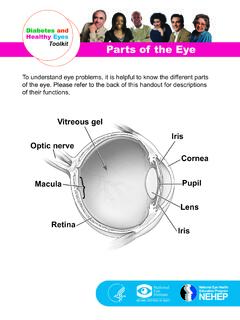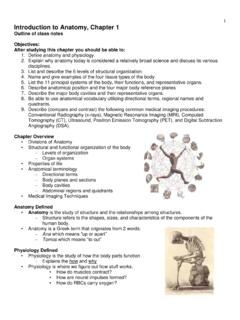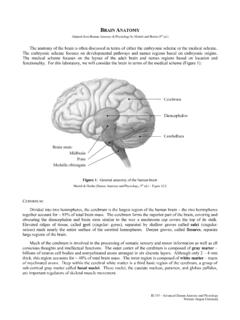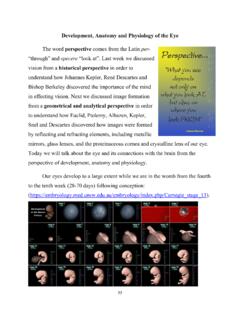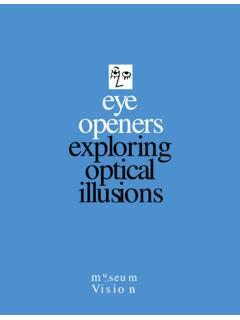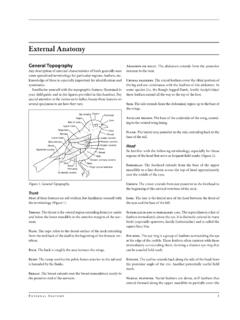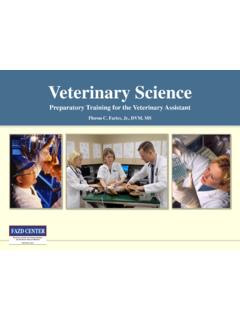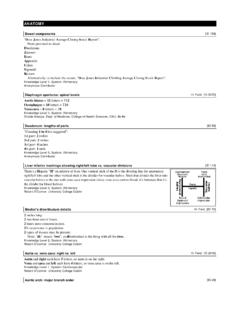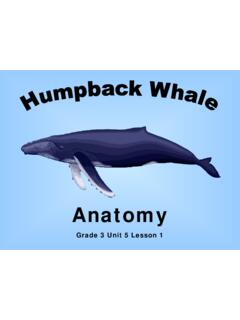Transcription of ANATOMY AND PHYSIOLOGY OF Farm Animals …
1 ANATOMY AND PHYSIOLOGY OFFarm AnimalsSEVENTH EDITIONCOPYRIGHTED MATERIALINTRODUCTION TO ANATOMY AND PHYSIOLOGYThe term ANATOMY has come to refer to the science that deals with the form and struc-ture of all organisms. Literally, the word means to cut apart; it was used by early anatomists when speaking of complete dissection of a contrast to ANATOMY , which deals primar-ily with structure, PHYSIOLOGY is the study of the integrated functions of the body and the func-tions of all its parts (systems, organs, tissues, cells, and cell components), including biophys-ical and biochemical ANATOMY and PHYSIOLOGY courses are taught separately, the approach to the laboratory portion of each course is considerably different.
2 Study in a typical gross ANATOMY laboratory is based primarily on dissection of animal cadav-ers. These usually have been preserved by embalming, and one or more parts of the vas-cular system have been injected with a colored material to facilitate identifi cation of the vessels. Careful dissection coupled with close observa-tion gives the student a concept of the shape, texture, location, and relations of structures visible to the unaided eye that can be gained in no other way.
3 Similarly, the use of the micro-scope with properly prepared tissue sections on slides is essential for understanding structures that are so small they cannot be seen without optical or electron microscopic the PHYSIOLOGY laboratory, the student studies the response of whole Animals , isolated Descriptive Terms Useful in the Study of AnatomyMicroscopic ANATOMY : animal Cells and TissuesEpithelial TissuesConnective TissuesMuscle TissueNervous TissueThe General Plan of the animal BodyChapter 1 34 / ANATOMY AND PHYSIOLOGY OF farm Animals organs, or individual cells to changes in their environment (both internal and external).
4 Changes may be induced by almost any agent or manipulation, for example, drugs, changes in temperature or altitude, surgical modifi cations (such as neutering), and changes in diet. Monitoring of the responses may be as simple as monitoring changes in body weight or as complex as measuring the electrical poten-tial across the cell membrane of a single and physiologists working in research use some of the same techniques that are used in teaching laboratories but with con-siderable refi nement.
5 Both types of scientists use equipment and methods developed in the physical sciences, particularly chemistry and physics. The anatomist applies the principles of physics to the use of microscopes and applies knowledge of chemistry in the staining of various parts of cells and tissues. The combina-tion of chemistry and microscopic ANATOMY is known as ANATOMY and PHYSIOLOGY are com-monly pursued as more or less independent disciplines, they are both facets of the study of the animal body.
6 A thorough knowledge of structure imparts much information about its function. However, a mere description of struc-ture without describing function would be of little practical value. Conversely, it is impossible to gain a thorough understanding of function without a basic knowledge of science of ANATOMY has become so extensive that it is now divided into many spe-cialized branches. In fact, Dorland s Medical Dic-tionary defi nes 30 subdivisions of ANATOMY . This text chiefl y describes gross (macroscopic) ANATOMY .
7 This is the study of the form and relations (relative positions) of the structures of the body that can be seen with the unaided eye. Comparative ANATOMY is a study of the structures of various species of Animals , with particular emphasis on those characteristics that aid in classifi cation. Embryology is the study of developmental ANATOMY , covering the period from conception (fertilization of the egg) to birth. Another large branch of ANATOMY consists of the study of tissues and cells that can be seen only with the aid of a microscope.
8 This is known as microscopic ANATOMY , or most recent development in the study of ANATOMY is ultrastructural cytology, which deals with portions of cells and tissues as they are visualized with the aid of the electron microscope. The term fi ne structure is used fre-quently in reference to structures seen in elec-tron micrographs (photographs made with the electron microscope).Our approach to the study of ANATOMY will be chiefl y by systems systematic ANATOMY . To name the study, the suffi x -ology, which means branch of knowledge or science, is added to the root word referring to the system.
9 Table 1-1 Table 1-1. Nomenclature for Systematic AnatomySystemName of StudyChief StructuresSkeletal systemOsteologyBonesArticular systemArthrologyJointsMuscular systemMyologyMusclesDigestive systemSplanchnologyStomach and intestinesRespiratory systemSplanchnologyLungs and airwaysUrinary systemSplanchnologyKidneys and urinary bladderReproductive systemSplanchnologyOvaries and testesEndocrine systemEndocrinologyDuctless glandsNervous systemNeurologyBrain, spinal cord, and nervesCirculatory systemCardiologyHeart and vesselsSensory systemEsthesiologyEye and ear INTRODUCTION TO ANATOMY AND PHYSIOLOGY / 5indicates the commonly accepted systems, the name of the study of those systems, and the chief structures involved in each has also become so extensive in scope that many areas of specialization are recognized.
10 Like ANATOMY , these may be based on body systems ( , neurophysiology, gas-trointestinal PHYSIOLOGY , cardiovascular phy-siology, respiratory PHYSIOLOGY , endocrine PHYSIOLOGY , and reproductive PHYSIOLOGY ) or the level of biological organization (cell physi-ology and organismal PHYSIOLOGY ). All of these subdivisions become the parts of such overall areas of study as applied PHYSIOLOGY , compara-tive PHYSIOLOGY , pathophysiology, medical PHYSIOLOGY , and mammalian PHYSIOLOGY . We will be concerned with these systems and studies as they relate specifi cally to farm Terms Useful in the Study of AnatomyWhen giving geographic locations, we make use of certain arbitrary frames of reference known as meridians of latitude and longitude.
